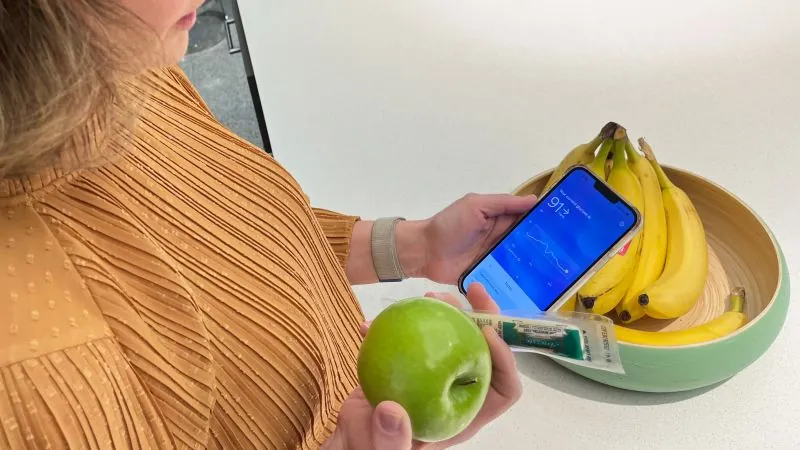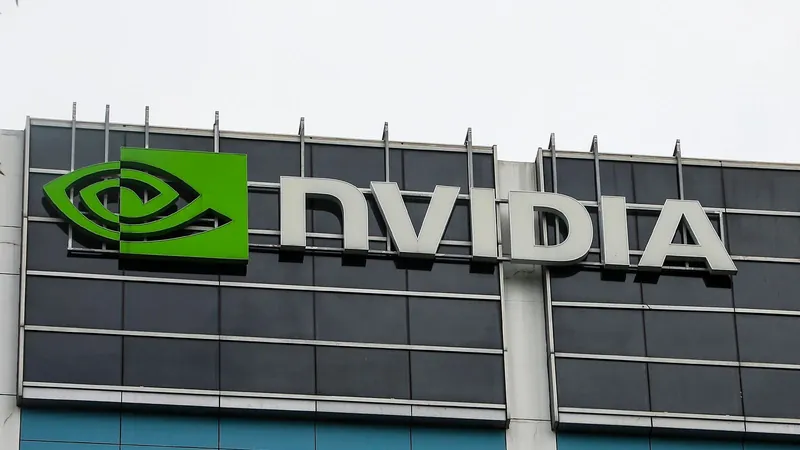
I Tried a Glucose Monitor for Six Weeks: Here’s What It Revealed About Food Choices and My Anxiety
2024-11-29
Author: William
In September, I faced a moment many can relate to: standing in front of an open refrigerator, hunger gnawing at me, yet paralyzed by indecision. My new continuous glucose monitor (CGM) was silently recording every choice I made, adding an unexpected layer of pressure to my eating habits. I was determined to tame this digital beast and keep my glucose levels in check.
For the uninitiated, a CGM is a small device affixed to the arm that continuously measures blood sugar levels. Traditionally used by individuals with diabetes, it has recently gained attention as a wellness tool for the general public. Intrigued by the potential insights, I opted to try it despite not having diabetes.
At first, my choices were cautious and restrictive. Apples? Too much sugar. Granola bars? No thanks! Cheese? Perfect—my glucose remained stable. My meals morphed into something resembling a ketogenic diet. My husband jokingly inquired if this was a stealthy route to a low-carb lifestyle, and honestly, he wasn’t far off. My anxiety over monitoring glucose levels led me to drastically alter my diet, shedding three pounds in the first week, presumably due to my nervous eating habits.
The Role of CGMs in Health Monitoring
Continuous glucose monitors have transformed diabetes management. For those reliant on insulin, such devices provide life-saving data, allowing precise adjustments to insulin doses and minimizing risks of dangerous health conditions. Laura Marston, a type 1 diabetes advocate, shares, "Before I used a CGM, I often went too long without checking my glucose, risking serious complications. Now, I know my levels at all times."
However, the increasing availability of CGMs for non-diabetics has sparked debates among health professionals. Major companies like Dexcom and Abbott now offer devices direct to consumers, raising the question: Are these monitors useful for anyone who isn’t diabetic? The FDA has acknowledged their potential role in enhancing health data accessibility, with Abbott's Lingo and Dexcom's Stelo being notable examples introduced this year.
My Struggles and Discoveries
My excitement about the CGM quickly turned into an obsession. The app provided near-instant feedback about every meal, and soon, I was consumed by my data. Shockingly, while I expected healthy foods to show stable glucose levels, I was surprised by some readings. For instance, a seemingly wholesome salad spiked my glucose due to a sugary dressing, while a slice of pizza didn’t have the disastrous effect I anticipated.
Dr. Jody Dushay, who reviewed my data, reassured me that my glucose excursions fell within normal ranges. This conflicting information left me pondering the true impact of my food choices. Could a simple monitor provide insights about longer-term health and energy levels? The scientific community remains divided on this issue, with some experts advocating for CGM use among healthy individuals to promote better dietary choices.
The Emotional Fallout of Monitoring
My initial experience with the CGM revealed another dimension: the emotional toll of living under constant surveillance of my body’s responses. Expert opinions caution that those with histories of eating disorders may find CGMs trigger anxiety rather than promote better habits. Dr. Nicole Spartano highlighted the lack of consensus on how to interpret glucose results, further complicating the utility of these devices for non-diabetics.
However, CGMs have the potential to illuminate personal dietary responses, as seen with CNN’s Dr. Sanjay Gupta. He noted how his body reacts differently to foods compared to his wife, underscoring the notion that glucose responses are highly individualized.
Conclusion: A Journey of Self-Discovery
After four weeks, I paused my CGM experiment, wanting to approach it differently. Instead of letting the device dictate my eating, I focused on recording my meals without immediate feedback. This new strategy helped me regain control, revealing consistent responses to certain foods.
As I prepared to don my final device, I opted for a structured approach: I planned to capture my typical eating patterns without the pressure of monitoring, then adjust my habits based on the insights gained.
The journey reiterated a crucial point: While CGMs can be powerful tools for understanding individual health dynamics, the key lies in how we interpret that data and integrate it into our lives—especially as we seek to foster healthier eating habits without unnecessary anxiety.









 Brasil (PT)
Brasil (PT)
 Canada (EN)
Canada (EN)
 Chile (ES)
Chile (ES)
 España (ES)
España (ES)
 France (FR)
France (FR)
 Hong Kong (EN)
Hong Kong (EN)
 Italia (IT)
Italia (IT)
 日本 (JA)
日本 (JA)
 Magyarország (HU)
Magyarország (HU)
 Norge (NO)
Norge (NO)
 Polska (PL)
Polska (PL)
 Schweiz (DE)
Schweiz (DE)
 Singapore (EN)
Singapore (EN)
 Sverige (SV)
Sverige (SV)
 Suomi (FI)
Suomi (FI)
 Türkiye (TR)
Türkiye (TR)